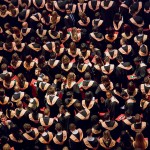Youth CommentaryBy Nelson Everett Toriano, Pacific News ServiceAmericans often think the U.S. is the world’s most accepting places for gay, lesbian and transgender people. But a young gay American man finds out differently in the mostly Catholic, socially conservative Philippines.Mar 26, 2004 – During my trip to the Philippines, my cousin introduced me to people in her high school ROTC program. Carrying paper fans, her male friends skipped toward me from the back of their exercise lines. They called me guapo, or “handsome” in Tagalog. I blushed, having never been approached before by flamers in fatigues. I was surprised to find that in the mostly Catholic society of my homeland, gay culture is more tolerated than in America. From nightlife to the media, baklas (Tagalog for gays) are the norm. The strangest part of the entire experience was realizing that although I’m a gay male, as an American I was uncomfortable with such tolerance. While the recent court ban on gay marriages in San Francisco — as well as President Bush’s proposed constitutional amendment outlawing gay marriage — attacks me personally, my visit to the Philippines taught me the only way to counteract fear of the unknown is to try to understand it. During my trip, I did just that. Though a fairly conservative country, the Philippines oozes sex, especially in its gay club scene. I paid five dollars to get into BED, one of Manila’s hottest gay clubs. Inside, I was immediately struck by the club’s musky heat. I never made it to the bar in the back because the club was too crowded. Sweaty men were standing so close together that no one could move their arms to dance. Almost every guy had the same look: spiked hair, plucked eyebrows, fitted jeans, white collared shirts with the top button undone and the sleeves rolled halfway up. Some men even wore sunglasses in the club. In the Philippines, smoking and crowded rooms are everywhere, and I found the club nauseating. Outside, I noticed a few white men who stood tall among the short Filipinos. Then there were the cross-dressers, skinny and without breasts. At an outdoor bar, my cousin broke down the Filipino gay scene. She said some of the men are actually heterosexual, with girlfriends at home. But it’s common for closeted gay men to pay straight men for their “company.” The straight men then spend the money on their girlfriends, who don’t know where it comes from. My cousin said you can spot a gay man or a “straight gigolo” in the Philippines by looking for those dressed in “couture” fashion. And since the Philippines is a developing country where medicine is costly, male cross-dressers can’t afford the hormones for breasts. “Professional” drag queens tend to be of the upper class. She said straight gigolos are so common that almost any Filipino’s “gay-dar” is finely tuned. In my hotel room that night, I watched a man dressed as a goth sing Madonna’s “Broken” on MTV Philippines. On another channel, a girl in a soap opera was crying, asking her brother if the reason he is so distant is because he’s gay. Later on during my stay, I took a field trip to ABS-CBN, the Philippines’ most popular television station. I sat in the audience during a three-hour variety show. While everyone watched contestants run around, I watched a few male crewmembers kiss each other. In the Philippines, I was aware of almost every gay interaction or innuendo. But no Filipino seemed to give any such occurrences a second glance. Upon returning to San Francisco, I realized that in the so-called “gay Mecca” of the United States, most public displays of gay affection take place only in the Castro district. Gays in the media have only recently increased in presence. And gays who act flamboyant in the hood are asking to get beat. I was overwhelmed by the Philippines’ social acceptance of gays. It was also fascinating to see how men in a different country interpreted femininity: thin bodies, long hair, thick layers of makeup. But what was most surprising was how much I, as a gay man, noticed these things while my straight friends there didn’t even care. Growing up in America, I tried my hardest to be the best person I could — never working less than two jobs for five years, graduating college with honors, and being one of the most driven members of student government — all because I didn’t think anyone would accept who I really was. So when I saw pictures of 70-year-old lesbians crying and hugging each other after getting married in San Francisco, I thought that finally, it’s possible that I might actually be treated as an equal in American society. But it looks like it may be awhile before I experience the same type of acceptance here that I experienced in the Philippines. I question President Bush and other policy makers when they describe America as a model nation for the rest of the world, especially for developing countries. How can they say that when they don’t even understand the people they’re supposed represent here in this country? PNS contributor Nelson Everett Toriano, 21, is a writer for YO! Youth Outlook, a magazine by and for San Francisco Bay Area youth, and a PNS project. |
||
|











